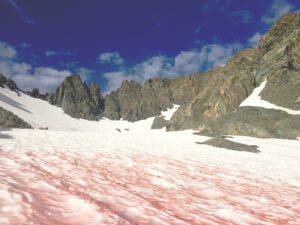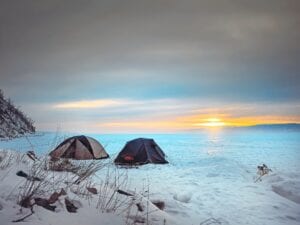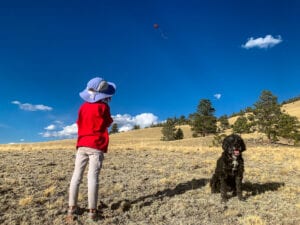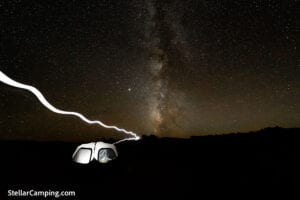Packing for camping
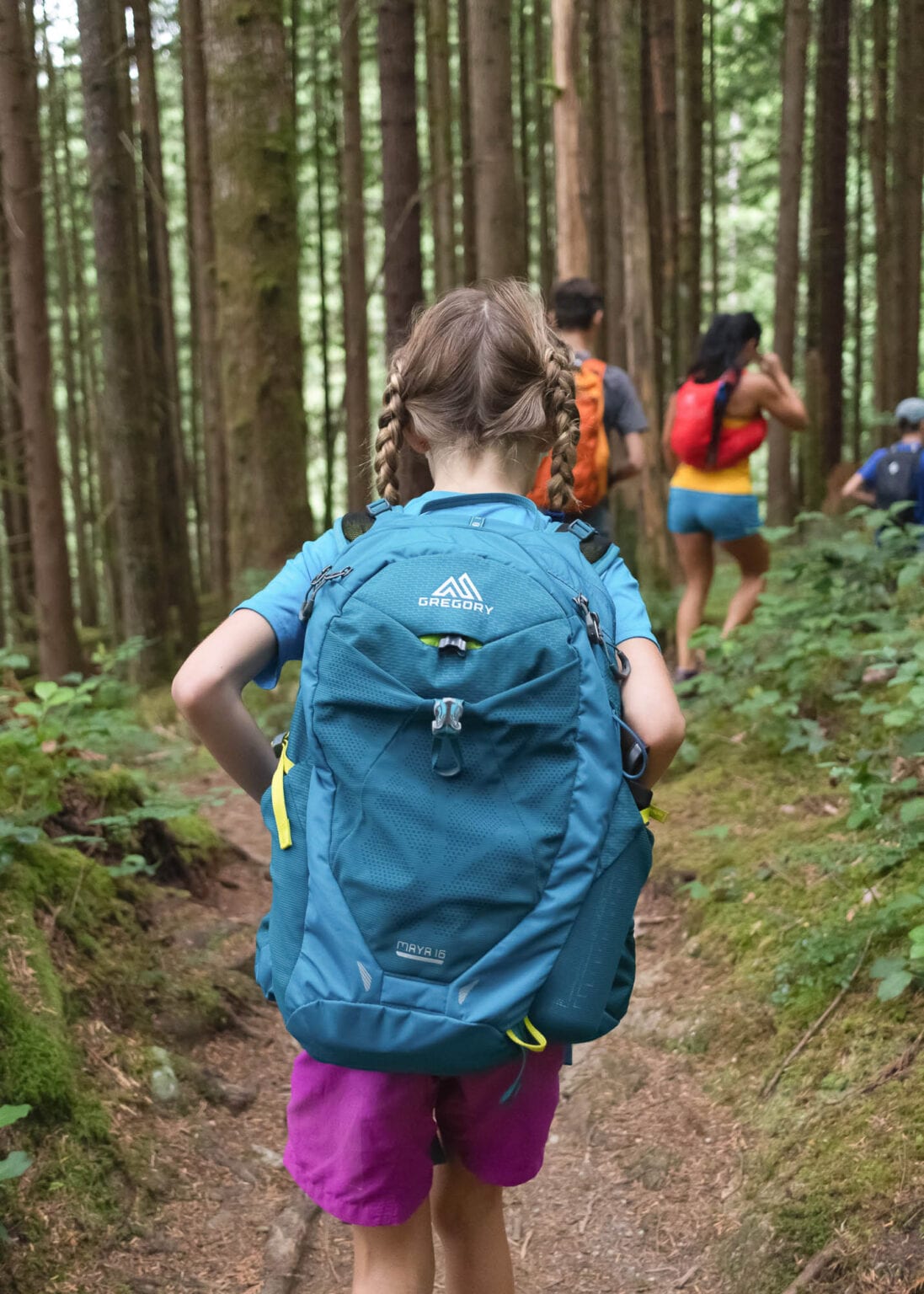
What are the best packing gear and packing strategies for camping?
We’ll talk first about packing gear. Plastic bins are a godsend when it comes to packing. If possible, choose bins that are clear (to better find your stuff) and that feature a strong lid and handles. For your food, use a bin that closes securely to keep hungry critters out (small animals have been known to infiltrate locked cars!). Some bins, like the Rubbermaid Action Packer, have lockable lids.
You can repurpose coffee cans, gelato containers, nut containers, etc. for organizing smaller items. In place of plastic bags, try rezip bags or Stasher bags for miscellaneous stuff. When it comes to toiletries, it’s helpful to use a hanging bag, such as L.L.Bean’s Personal Organizer Toiletry Bag.
Cargo boxes for the roof of your vehicle are a great place for bulky tents, sleeping bags, camp chairs, and the like. To use a cargo box, you need a roof rack with crossbars. You’ll need to keep the maximum weight capacity of the box in mind—and also the required height clearance when driving!. Don’t choose too big a cargo box, because larger boxes are heavier, costlier, worse for fuel economy, and noisier. Cargo bags are a less pricey alternative, though they are less durable and are not entirely waterproof. You may also want to consider a cargo net for your trunk.
When it comes time to actually pack your gear, use separate bins for cooking-related items, food, clothing/personal items, and sleeping-related items. Keep everything with a smell that could attract a bear or other wildlife in one bin to protect your other stuff. Label your bins, and be vigilant about keeping items in the right place. Though plastic bins are great, don’t put everything in a hard-sided container—softer items like sleeping bags and pillows can be squished in between bins to make the most of your vehicle space and prevent bins from sliding around.
Now we’ll talk about planning for your trip. Given the complexity of camping, lists are absolutely essential. You can make your own (it may be helpful to make categories like clothing, personal care, food/food prep, sleeping/shelter, fun), or use sample lists, like those from REI and the Packing List Place.
Start your packing process at least a couple of days ahead of time, and give yourself more time than you think you’ll need. Check the weather forecast, and pack for the possible weather extremes. Consider what activities you plan, what activities are allowed at your destination (e.g., campfires?), and what supplies are available there (e.g., potable water?).
You may want to bring back-ups of a few essentials, like water bottles, lighters, sunscreen, and hat, just in case they get misplaced. But don’t go overboard on packing or expect that you’ll be perfectly decked out in fresh, matching clothing every day of your trip! Before actually packing your camping items into a bin, check that they’re in good working condition. If you find yourself running out of space, consider purchasing collapsible and nesting gear.
When it’s time to load your vehicle, put bins in first. Leave space for your cooler, but put it in last on warm days to help it stay cool. Don’t pack anything that could tip, like a vertically oriented suitcase, where it could fall on a pet or kid. Remember that you can use the floor space under the feet of smaller kids (or the dog’s seat). To avoid a really annoying ride, make sure your cooking gear and other items with potential to rattle are secured in non-rattling fashion. Keep snacks and water handy in the car, plus maps, raingear, hat/sunscreen, bug spray, anything to keep the kids happy, plus a bottle opener for that cold drink when you hit your campsite.
If you’re flying to your camping destination, a few special considerations apply. You can’t bring camping fuel on a plane, and sharp objects like knives and tent stakes should go in checked baggage. If you’re unsure about applicable rules, check the TSA “What Can I Bring” website.
Last, follow proper unpacking procedures after your trip. Make sure your tent and other items like tarps are completely dry before stowing them. Store sleeping bags out of their stuff sacks. Roll, rather than fold, your tent for storage. Clean out your kitchen bin and thoroughly wash all cookware, dishware, and utensils. Remove batteries from electronic camping-related devices.


